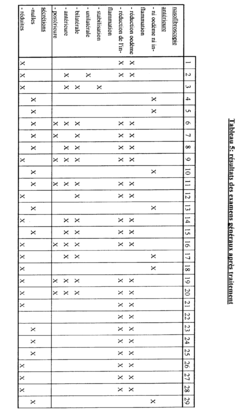How to Enhance Aquatic Health with Hypertonic Treatments?
Hypertonic Treatments in Aquaculture: Background and Objectives
Hypertonic treatments have emerged as a promising approach in aquaculture to enhance aquatic health and improve overall productivity. This technique, rooted in the principles of osmosis, involves exposing aquatic organisms to solutions with higher solute concentrations than their internal fluids. The practice has evolved significantly over the past few decades, driven by the growing demand for sustainable and efficient aquaculture practices.
The primary objective of hypertonic treatments in aquaculture is to create a controlled stress environment that stimulates the organisms' natural defense mechanisms. This controlled stress can lead to improved immune responses, enhanced disease resistance, and better overall health in aquatic species. Additionally, these treatments aim to reduce the reliance on antibiotics and other chemical interventions, aligning with the global push for more environmentally friendly aquaculture practices.
Historically, the use of hypertonic solutions in aquaculture can be traced back to traditional practices in various cultures. However, it was not until the late 20th century that scientific research began to systematically explore and validate these methods. The evolution of hypertonic treatments has been closely tied to advancements in our understanding of fish physiology, osmotic regulation, and stress responses in aquatic organisms.
Recent technological developments have further refined the application of hypertonic treatments. Precision control systems now allow for more accurate manipulation of solution concentrations and exposure times. This level of control has opened up new possibilities for tailoring treatments to specific species and life stages, maximizing benefits while minimizing potential adverse effects.
The current trajectory of hypertonic treatment research is focused on optimizing protocols for different aquatic species and production systems. There is a growing interest in understanding the molecular mechanisms underlying the beneficial effects of these treatments. This knowledge is crucial for developing more targeted and effective applications, potentially leading to breakthroughs in aquaculture health management.
As the aquaculture industry continues to expand to meet global food security challenges, the role of hypertonic treatments is expected to become increasingly significant. The technology aligns well with the industry's goals of increasing productivity while reducing environmental impact. Future research aims to explore the potential of combining hypertonic treatments with other innovative aquaculture technologies, such as recirculating aquaculture systems and aquaponics, to create more resilient and sustainable production models.
In conclusion, hypertonic treatments represent a promising frontier in aquaculture health management. By harnessing the power of osmotic stress, this approach offers a natural and potentially more sustainable method for enhancing aquatic health. As research progresses and technology advances, hypertonic treatments are poised to play a crucial role in shaping the future of aquaculture, contributing to both food security and environmental sustainability.
Market Analysis for Aquatic Health Solutions
The market for aquatic health solutions has been experiencing significant growth in recent years, driven by increasing awareness of the importance of water quality in both commercial and recreational settings. The global aquaculture market, a key segment for aquatic health solutions, was valued at $285 billion in 2019 and is projected to reach $378 billion by 2027, growing at a CAGR of 5.8% from 2020 to 2027.
Hypertonic treatments, as a specific subset of aquatic health solutions, are gaining traction due to their effectiveness in managing various aquatic health issues. These treatments involve the use of solutions with higher solute concentrations than the surrounding environment, which can be particularly useful in addressing osmotic stress, pathogen control, and overall water quality management.
The demand for hypertonic treatments is primarily driven by the aquaculture industry, where maintaining optimal water conditions is crucial for fish and shellfish health. With the global population expected to reach 9.7 billion by 2050, the pressure on aquaculture to meet increasing protein demands is intensifying, thereby boosting the need for advanced aquatic health solutions.
In addition to aquaculture, other sectors contributing to the market growth include ornamental fish keeping, public aquariums, and research facilities. The ornamental fish industry alone was valued at $6.8 billion in 2019 and is expected to reach $9.2 billion by 2027, presenting a significant opportunity for hypertonic treatment solutions.
Geographically, Asia-Pacific dominates the aquatic health solutions market, accounting for over 60% of global aquaculture production. Countries like China, India, and Indonesia are major contributors to this market share. North America and Europe follow, with growing concerns about water quality and sustainable aquaculture practices driving market growth in these regions.
The market for hypertonic treatments is characterized by a mix of established players and innovative startups. Key market players are focusing on developing eco-friendly and cost-effective solutions to address the growing demand for sustainable aquatic health management. There is also an increasing trend towards the integration of technology, such as IoT and AI, in aquatic health monitoring and treatment systems.
Challenges in the market include stringent regulations regarding chemical use in aquatic environments, the need for specialized knowledge in application, and the potential for environmental impacts. However, these challenges also present opportunities for innovation in developing safer, more efficient hypertonic treatment methods.
As the aquaculture industry continues to expand and environmental concerns grow, the demand for effective aquatic health solutions, including hypertonic treatments, is expected to rise. This market trend is further supported by increasing research and development activities aimed at improving treatment efficacy and minimizing environmental impact.
Current Challenges in Hypertonic Treatment Applications
Despite the promising potential of hypertonic treatments in enhancing aquatic health, several significant challenges currently hinder their widespread application and efficacy. One of the primary obstacles is the difficulty in maintaining consistent osmotic pressure throughout the treatment process. Fluctuations in osmolarity can lead to stress in aquatic organisms, potentially negating the intended therapeutic effects.
Another challenge lies in the precise dosage control of hypertonic solutions. Overdosing can result in severe dehydration and electrolyte imbalances in aquatic species, while underdosing may fail to achieve the desired therapeutic outcomes. This delicate balance requires sophisticated monitoring systems and expertise, which are not always readily available in aquaculture settings.
The diversity of aquatic species presents a further complication. Different organisms exhibit varying tolerances to hypertonic conditions, necessitating species-specific treatment protocols. This heterogeneity makes it challenging to develop standardized treatment regimens applicable across a wide range of aquatic environments.
Environmental factors also pose significant hurdles. Water quality parameters such as temperature, pH, and dissolved oxygen levels can interact with hypertonic treatments, altering their effectiveness and potentially causing unintended consequences. Managing these variables in open water systems or large-scale aquaculture operations proves particularly challenging.
Moreover, the long-term effects of repeated hypertonic treatments on aquatic ecosystems remain poorly understood. Concerns exist regarding the potential development of resistance in pathogens and the impact on beneficial microorganisms essential for maintaining ecosystem balance.
The economic viability of hypertonic treatments presents another obstacle. The costs associated with implementing and maintaining the necessary infrastructure, coupled with the expenses of specialized solutions and monitoring equipment, can be prohibitive for many aquaculture operations, particularly in developing regions.
Regulatory challenges further complicate the adoption of hypertonic treatments. The lack of standardized guidelines and approval processes for these treatments in many jurisdictions creates uncertainty and hesitation among potential users. This regulatory gap also hampers research and development efforts aimed at improving treatment efficacy and safety.
Lastly, there is a notable knowledge gap among aquaculture practitioners regarding the proper application and management of hypertonic treatments. This lack of expertise can lead to suboptimal outcomes and reluctance to adopt these potentially beneficial techniques. Addressing this challenge requires comprehensive education and training programs tailored to the needs of the aquaculture industry.
Existing Hypertonic Treatment Methodologies
01 Hypertonic solutions for aquatic disease treatment
Hypertonic solutions are used to treat various aquatic diseases by creating an osmotic gradient that helps eliminate pathogens or parasites from fish and other aquatic organisms. These treatments can be effective against external parasites, bacterial infections, and certain fungal diseases in aquaculture settings.- Hypertonic solutions for aquatic animal health: Hypertonic treatments are used in aquaculture to improve the health of aquatic animals. These solutions have a higher solute concentration than the surrounding water, which can help in treating various conditions and diseases in fish and other aquatic organisms. The treatments may involve immersion or bath applications, helping to maintain osmotic balance and reduce stress in aquatic animals.
- Water quality management in aquaculture: Hypertonic treatments play a role in managing water quality in aquaculture systems. These treatments can help control pathogens, reduce ammonia levels, and improve overall water conditions. By maintaining optimal water parameters, the health and growth of aquatic organisms can be enhanced, leading to improved productivity in aquaculture operations.
- Stress reduction and disease prevention in fish: Hypertonic solutions are used to reduce stress and prevent diseases in fish populations. These treatments can help strengthen the fish's immune system, improve osmoregulation, and enhance their ability to cope with environmental changes. By reducing stress and preventing diseases, hypertonic treatments contribute to better overall health and survival rates in aquaculture.
- Wound healing and tissue repair in aquatic organisms: Hypertonic treatments are employed to promote wound healing and tissue repair in aquatic organisms. These solutions can help reduce inflammation, prevent infection, and accelerate the healing process of injuries or lesions. By supporting the natural healing mechanisms of aquatic animals, hypertonic treatments contribute to faster recovery and improved overall health.
- Transport and acclimation of aquatic species: Hypertonic solutions are utilized during the transport and acclimation of aquatic species to new environments. These treatments help reduce stress, maintain osmotic balance, and improve survival rates during transportation. Additionally, hypertonic solutions can aid in the gradual acclimation of aquatic organisms to different water conditions, minimizing shock and improving overall health during transitions.
02 Salt-based treatments for aquatic health management
Salt-based hypertonic treatments are commonly used in aquaculture for managing fish health. These treatments can help reduce osmotic stress, improve gill function, and aid in the removal of external parasites. The controlled use of salt solutions can also support overall fish health and stress reduction in both freshwater and marine environments.Expand Specific Solutions03 Hypertonic baths for ornamental fish
Hypertonic baths are utilized in the ornamental fish industry to treat various health issues. These baths can help in the management of protozoan infections, bacterial diseases, and stress-related problems in aquarium fish. The treatment involves immersing fish in a hypertonic solution for a specified duration under controlled conditions.Expand Specific Solutions04 Osmotic regulation in aquatic organisms
Research on osmotic regulation in aquatic organisms helps in developing effective hypertonic treatments. Understanding how different species respond to changes in salinity and osmotic pressure allows for the creation of tailored treatments that maximize therapeutic effects while minimizing stress on the treated organisms.Expand Specific Solutions05 Hypertonic solutions in aquaculture water quality management
Hypertonic solutions play a role in water quality management in aquaculture systems. These solutions can be used to adjust salinity levels, control certain algal blooms, and improve overall water quality parameters. Proper application of hypertonic treatments can contribute to a healthier aquatic environment and reduce the incidence of disease outbreaks.Expand Specific Solutions
Key Players in Aquatic Health Management
The field of aquatic health enhancement through hypertonic treatments is in a growth phase, with increasing market size and technological advancements. The global aquaculture market, valued at $285 billion in 2022, is expected to expand significantly, driving demand for innovative health solutions. Technological maturity varies across applications, with companies like University of Liege, South China University of Technology, and Shanghai Ocean University leading academic research. Commercial entities such as Laboratoire de la Mer SAS and Sorbent Therapeutics, Inc. are developing practical applications. The industry sees a blend of established players and emerging startups, indicating a dynamic and competitive landscape with potential for further innovation and market expansion.
Laboratoire de la Mer SAS
Sorbent Therapeutics, Inc.
Innovative Approaches in Hypertonic Therapies
- A hypertonic seawater composition with a 70% volume fraction of filtered and sterilized seawater, 24 g/l sodium chloride, pH 8.2, and specific mineral concentrations (1.04 g/l magnesium, 0.39 g/l calcium, 0.25 g/l potassium, 0.09 mg/l zinc, and 0.04 mg/l copper) is developed, administered as nebulized microparticles to optimize osmotic drainage without irritating the nasal mucosa.
- Development of undiluted hypertonic ionic solutions based on seawater with specific osmolality, pH, and ionic composition, which are well-tolerated and used as pharmaceutical compositions for nasal administration, reducing the need for corticosteroids by providing effective treatment for nasal congestion without side effects.
Environmental Impact Assessment
The implementation of hypertonic treatments in aquatic environments necessitates a comprehensive environmental impact assessment to ensure the long-term sustainability and ecological balance of aquatic ecosystems. This assessment primarily focuses on the potential effects of increased salinity or osmotic pressure on various components of the aquatic environment.
One of the primary concerns is the impact on native aquatic flora and fauna. Hypertonic treatments may alter the osmotic balance in water bodies, potentially affecting the physiological processes of aquatic organisms. Fish, amphibians, and invertebrates may experience osmotic stress, leading to changes in their behavior, growth rates, and reproductive success. Additionally, sensitive plant species may struggle to adapt to the altered water chemistry, potentially resulting in shifts in aquatic vegetation composition.
The assessment must also consider the potential for bioaccumulation of dissolved solutes in the food chain. Increased concentrations of certain ions or compounds used in hypertonic treatments could accumulate in aquatic organisms, potentially affecting higher trophic levels and even posing risks to human consumers of aquatic products.
Water quality is another crucial aspect to evaluate. Hypertonic treatments may influence parameters such as pH, dissolved oxygen levels, and nutrient cycling. These changes could have cascading effects on water clarity, algal growth, and overall ecosystem productivity. It is essential to model and monitor these parameters to predict and mitigate any adverse impacts on water quality.
The potential for long-term alterations in sediment composition and benthic habitats should also be examined. Changes in water chemistry may affect the solubility and mobility of various compounds in sediments, potentially releasing or sequestering pollutants. This could have implications for benthic organisms and the overall health of the aquatic ecosystem.
Furthermore, the assessment should consider the broader hydrological impacts. Hypertonic treatments may affect water density and stratification patterns in larger water bodies, potentially influencing circulation patterns and mixing processes. These changes could have far-reaching consequences for nutrient distribution, oxygen levels, and overall ecosystem functioning.
Lastly, the environmental impact assessment must address the potential for unintended consequences on surrounding terrestrial ecosystems. Groundwater interactions, riparian habitats, and species that depend on aquatic environments for part of their life cycle should be carefully evaluated to ensure that hypertonic treatments do not negatively impact these interconnected ecosystems.
Regulatory Framework for Aquaculture Treatments
The regulatory framework for aquaculture treatments plays a crucial role in ensuring the safe and effective use of hypertonic solutions to enhance aquatic health. Governments and international organizations have established comprehensive guidelines and regulations to govern the application of these treatments in aquaculture settings.
At the national level, regulatory bodies such as the Food and Drug Administration (FDA) in the United States and the European Medicines Agency (EMA) in the European Union oversee the approval and use of aquaculture treatments. These agencies evaluate the safety, efficacy, and environmental impact of hypertonic solutions before granting authorization for their use in fish farms and other aquatic environments.
The regulatory process typically involves rigorous testing and documentation requirements. Manufacturers must provide extensive data on the composition, mode of action, and potential side effects of hypertonic treatments. Additionally, they must demonstrate the treatments' effectiveness in improving aquatic health without causing harm to the target species or the surrounding ecosystem.
Environmental considerations are a key component of the regulatory framework. Agencies often require environmental impact assessments to evaluate the potential effects of hypertonic treatments on water quality, non-target organisms, and the broader aquatic ecosystem. This ensures that the use of these treatments does not lead to unintended consequences or ecological imbalances.
Monitoring and reporting mechanisms are integral to the regulatory framework. Aquaculture operators are typically required to maintain detailed records of treatment applications, including dosage, frequency, and observed outcomes. Regular inspections and audits may be conducted to ensure compliance with established protocols and to assess the ongoing safety and efficacy of the treatments.
International standards and guidelines also influence the regulatory landscape for aquaculture treatments. Organizations such as the World Organisation for Animal Health (OIE) and the Food and Agriculture Organization (FAO) of the United Nations provide recommendations and best practices for the use of hypertonic solutions in aquaculture. These guidelines often serve as a basis for national regulations and help promote harmonization of standards across different countries.
The regulatory framework also addresses the issue of antimicrobial resistance, which is a growing concern in aquaculture. Hypertonic treatments that incorporate antimicrobial agents are subject to additional scrutiny to prevent the development and spread of resistant pathogens. Regulations may limit the use of certain antimicrobials or require rotation of different treatment methods to mitigate resistance risks.
As research in aquatic health continues to advance, regulatory frameworks are evolving to keep pace with new technologies and treatment approaches. Adaptive regulatory mechanisms are being implemented to allow for the timely incorporation of scientific advancements while maintaining rigorous safety and efficacy standards.



